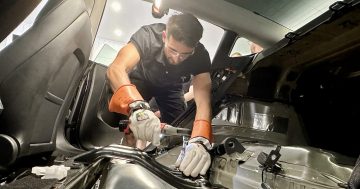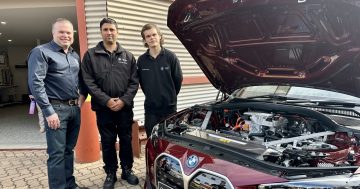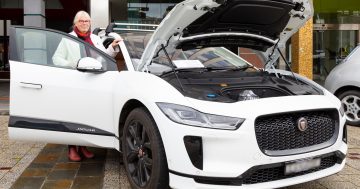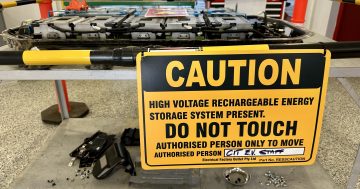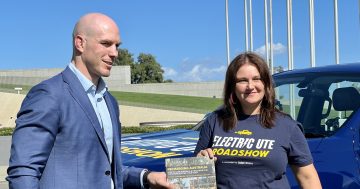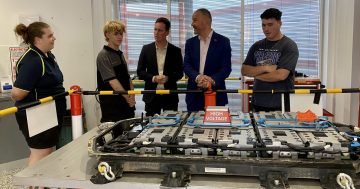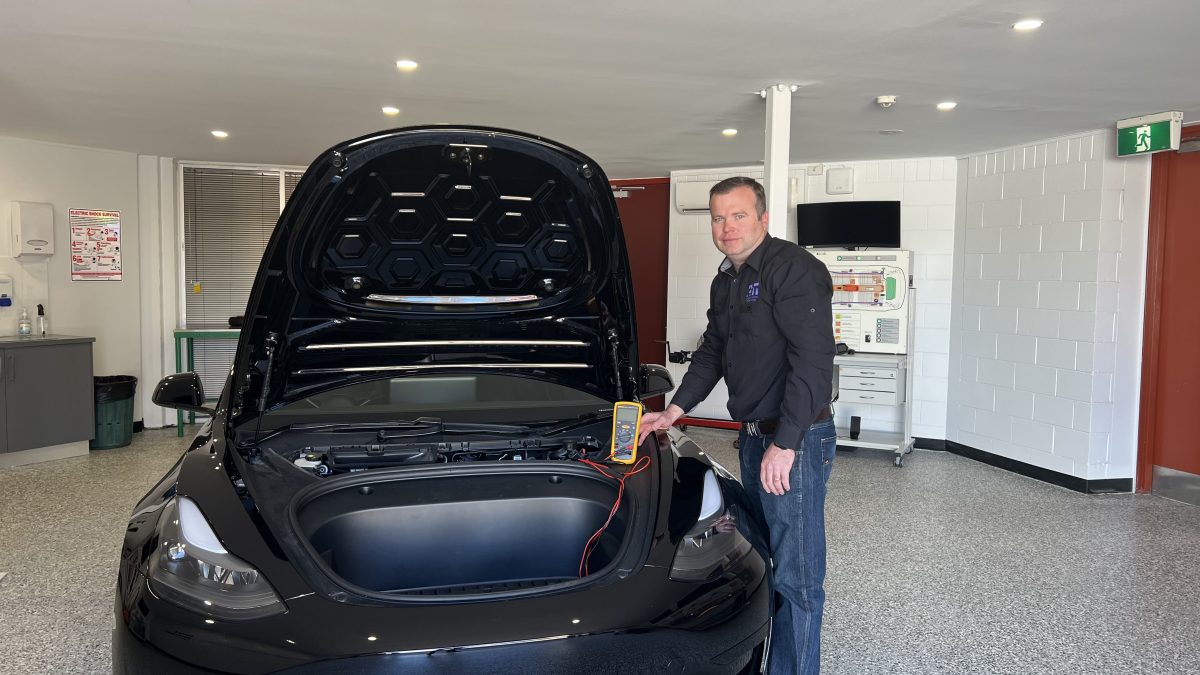
CIT automotive teacher Richard Lindsay with the Tesla Model 3. Photo: Lottie Twyford.
Open the roller door of an unassuming building at the Canberra Institute of Technology’s Fyshwick campus and you’ll find the future.
Well, kind of, in the form of a sleek Tesla Model 3 and an entire wall of flash-looking car simulators.
This workshop is where CIT is not only training the mechanics of tomorrow to service and repair electric and hybrid vehicles but also our city’s first responders on how to manage lithium battery fires.
And demand for electric training is literally amping up by the day.
Since the facility opened in April, 40 Transport Canberra and City Services staff have already completed the program and 16 Tesla apprentices are currently being run through.
Next year, the first-ever full cohort of students will begin their four-year-long apprenticeship to receive their Certificate III in Electrical Vehicle Technology.
CIT Automotive teacher Richard Lindsay said the reason behind the uptick in demand for EV training and upskilling is the market for the vehicles is finally changing.
“They aren’t a ‘new’ technology. It’s just that until now the manufacturers brought the cars into the country under warranty and trained their own staff. Now we’re getting so many that this is shifting,” he said.
“With this, the student cohort we’re attracting is different. Parents are excited about electric vehicles now in a way they weren’t about their kids pursuing a career as a mechanic.”
Mr Lindsay, recently named VET Teacher/Trainer of the Year, said attracting apprentice mechanics had become increasingly difficult in recent years, with attraction rates down by about 40 per cent.
He’s hopeful this trend won’t continue.
Currently, the lab is the only facility of its kind in the Territory and some of the machines it boasts are the only ones in the country.
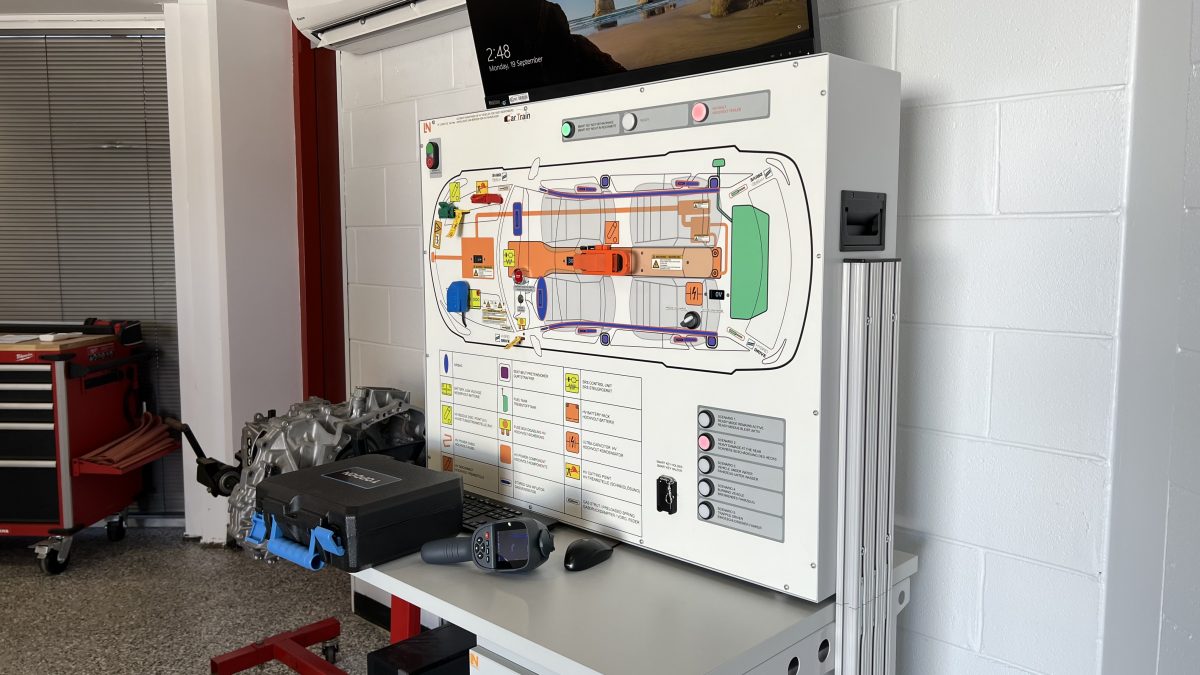
This training simulator is the only one of its kind in use in the country. Photo: Lottie Twyford.
Unlike a traditional mechanics workshop, the EV lab is full of simulators rather than real cars. That’s because lithium batteries are so volatile it’s too dangerous to purposely create faults in them without risking burning the vehicle to the ground or creating unnecessary hazards for the students.
“We’ve got to attack it in a different way which still allows the students to learn proper fault-finding techniques in a safe way,” Mr Lindsay explained.
“We can recreate any of the faults we’d normally see and students can use all of their normal testing equipment to do the diagnosis.”
From next year, fire and rescue crews will begin training in how to extinguish an electric vehicle when it’s on fire, submerged in water or has been subject to a heavy impact.
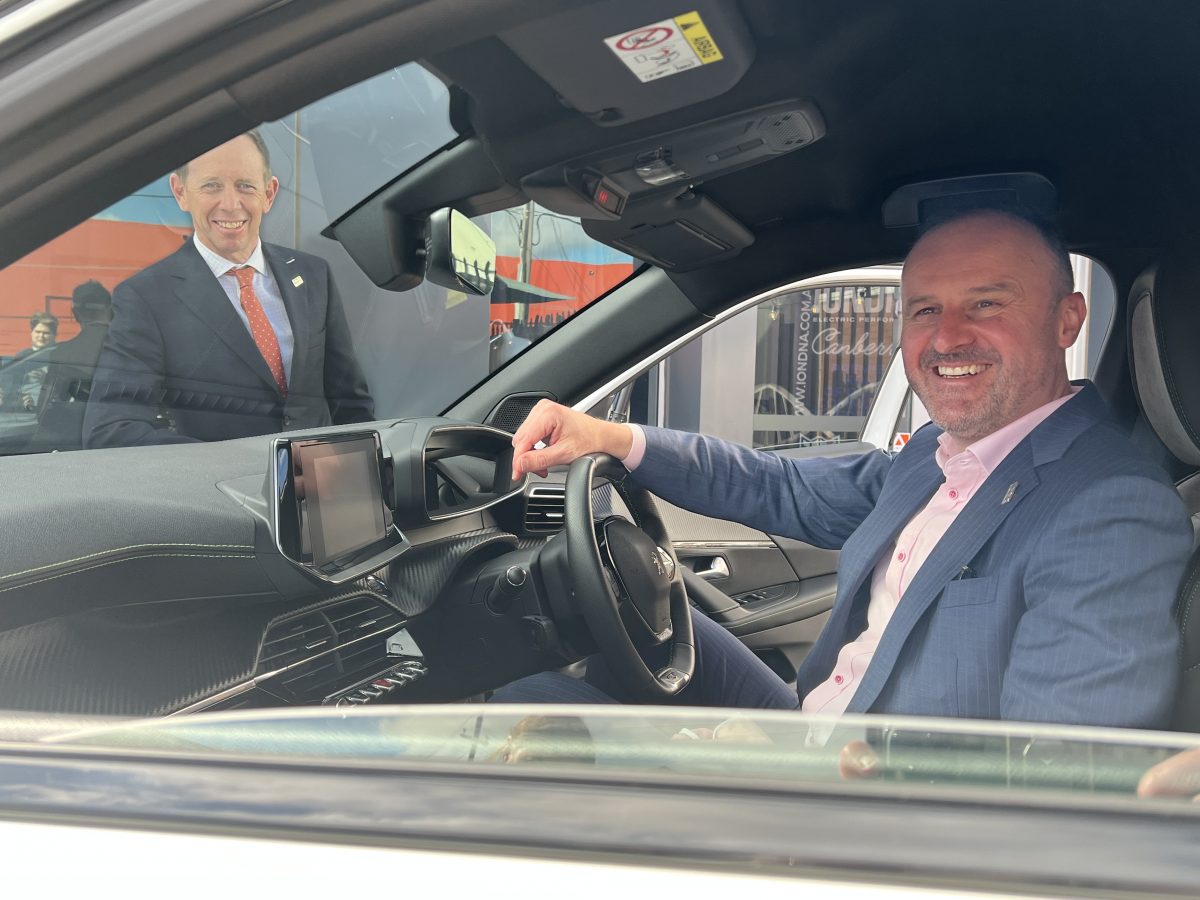
Chief Minister Andrew Barr and Minister for Energy and Emissions Reduction Shane Rattenbury released the Territory’s Zero Emissions Vehicle strategy. Photo: Lottie Twyford.
The ACT’s all-electric future drew closer this year as the government announced plans to phase out internal combustion engines with more clarity than ever before.
This included a commitment to banning new fossil fuel cars from being registered in the ACT from 2035 onwards, although the finer details of this ban are yet to be worked out. It wants 80 to 90 per cent of new cars sold in the ACT to be zero-emissions five years earlier than that.
A major overhaul of the car registration system to one based on emissions rather than weight has also been flagged by Chief Minister Andrew Barr, and by next year, the ACT should have 100 publicly-available EV charging stations. It’s estimated 1000 will be needed by 2030.
Some have expressed fears the charging infrastructure roll-out, the grid itself and the training of the city’s mechanics and first responders isn’t happening quickly enough.
But Mr Lindsay isn’t deterred by the scale of the training task ahead, although he acknowledged there is a “lot of ground to cover”.
“We’re definitely gearing up to ensure we aren’t training just for now, we’re training for the future as well,” he said.
Mr Lindsay estimates between 3000 and 4000 people in the Territory will need some form of electric vehicle training at least before the 2035 ban comes into effect on new cars.
“That’s because we’ve got to cover repair shops, tyre shops, panel beaters, roadside crews, tow truck operators and first responders and more,” Mr Lindsay said.
And with 1600 people on the waitlist to study the course already, Mr Lindsay just needs one more thing – more teachers.












